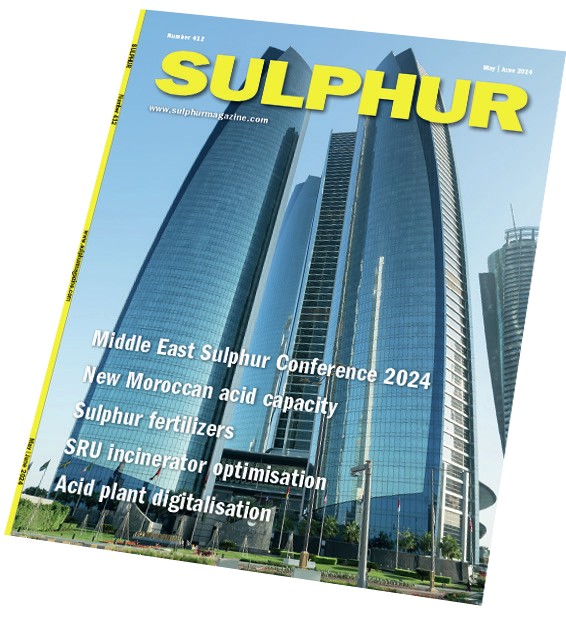Sulphur 412 May-Jun 2024

31 May 2024
Major miners

“It is easier to grow by buying existing copper mines…”
At the end of April, Australian mining giant BHP made waves in the business world by offering US$39 billion to take over its London-based rival Anglo-American, creating the world’s largest diversified mining company. For its part, Anglo’s board announced that it was rejecting the offer, saying that it was “opportunistic” and that it “significantly undervalued” their company. A revised bid was said to be in preparation at time of writing.
The rationale for the proposed merger is scale. In mining, size matters. Were the deal to go ahead, it would create the world’s largest copper producer, the world’s largest coal exporter, and the world’s second largest iron ore exporter, surpassing Rio Tinto. Of these, the copper combination is one of the most compelling. BHP was the world’s second largest copper producer in 2023, just behind Chile’s Codelco, with an output of 1.36 million t/a. Adding Anglo-American’s assets to this would see that rise to 1.9 million t/a according to CRU production estimates, 35% larger than Codelco, and representing around 10% of global copper production at a time when a tight market is forecast in the coming years.
Both companies’ portfolios are weighted heavily towards operations in Latin America, most notably in Chile and Anglo American also operates the Quellaveco mine in Peru. BHP is the manager of the world’s largest copper producing mines, Escondida, while Anglo American holds a 44% stake in the Collahuasi joint venture, the world’s third largest copper mine by copper units and second largest by contained copper resources. From a cost standpoint, CRU assess Anglo to be more competitively positioned, in the first quartile, on an All-in Sustaining Cost basis, while BHP sits just above the median, in the third quartile. It is possible that BHP has decided that it is easier to grow by buying existing copper mines rather than developing new ones in the current climate.
There is also the possibility of the combined company becoming a giant in the potash sector by the end of decade. While neither company currently produces potash, both have ambitious plans to build large scale capacity. The Jansen project in Saskatchewan, Canada will be the centrepiece of BHP’s potash portfolio, with a planned total capacity of 8.5 million t/a by 2029, making it the largest MOP (potassium chloride) mine in the world. Meanwhile, Anglo-American is constructing the world’s largest polyhalite mine at Woodsmith, in the north of England, which it bought from Sirius Minerals in 2020. This mine, with operation planned to begin in 2027, is designed to have a capacity of 13 million t/a of polyhalite ore, although the low potash grade would make this only 1.8 million t/a of K2 O, compared to 5.1 million t/a for Jansen. BHP has described the combined companies’ copper and potash assets as “future-facing commodities”.
We are currently only at the start of what could be a long process, however. Many people must be convinced, from Anglo-American’s shareholders to various regulatory bodies around the world, and it is likely that there would be divestments as part of the deal. Indeed, BHP’s proposal was itself conditional on Anglo selling off its South African assets; Anglo-American Platinum (Amplats) and Kumba Iron Ore. But it is potentially the biggest deal that the mining industry has seen for some time, and one with significant knock on effects in the metals and fertilizer sectors.






